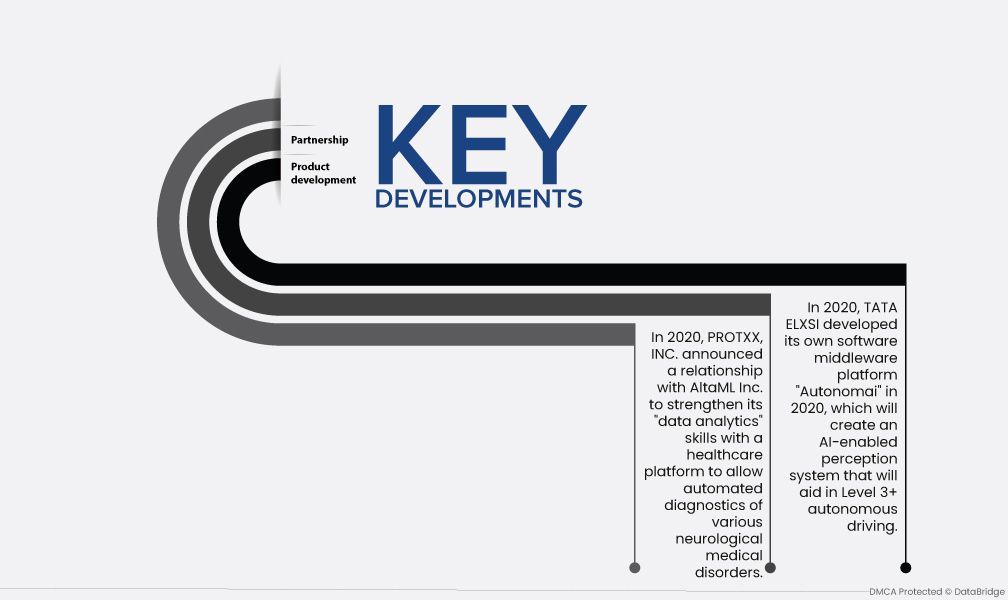Os dispositivos wearable, como smartphones e tablets, evoluíram com características melhoradas e capacidades de processamento independentes como resultado da digitalização. Nos últimos anos, tem-se registado um aumento significativo na adoção de dispositivos IoT para acesso remoto único. O aumento da procura por vários dispositivos e características modernas é um fator importante que impulsiona a expansão do mercado. Os eletrónicos vestíveis são dispositivos ou produtos de computação integrados que auxiliam a pessoa ou o utilizador a melhorar as tarefas do dia a dia. A América do Norte liderou o mercado de eletrónica de consumo, seguida pela União Europeia e pela Ásia-Pacífico.
Aceda ao relatório completo em https://www.databridgemarketresearch.com/reports/global-wearable-electronic-devices-market
O mercado global de dispositivos eletrónicos vestíveis foi avaliado em 67.373,95 milhões de dólares em 2021 e deverá atingir os 4.09.355,40 milhões de dólares até 2029, registando um CAGR de 15,60% durante o período previsto de 2022-2029. A crescente procura por aparelhos sofisticados com funções melhoradas é um fator-chave que impulsiona a expansão do mercado. Fatores como o aumento da taxa de aceitação de produtos wearable em novas aplicações, bem como as mudanças na tendência das tecnologias de comunicação e de rede, estão também a impulsionar o mercado dos dispositivos eletrónicos wearable. Além disso, melhorias técnicas, um aumento do número de clientes digitais e a disponibilidade de mobilidade na Internet irão acelerar a taxa de crescimento do mercado de dispositivos eletrónicos wearable.
Espera-se que o crescente uso da tecnologia pelo setor da saúde impulsione a taxa de crescimento do mercado
Face à pandemia, o uso de dispositivos wearable na área da saúde está a aumentar, uma vez que estes artigos trazem vantagens e benefícios tanto para os pacientes como para os profissionais de saúde. Entre estas vantagens estão a monitorização da saúde em tempo real das estatísticas vitais e a deteção precoce de doenças ou risco de uma grande crise de saúde. A tecnologia wearable e de uso auricular tem-se expandido rapidamente, uma vez que os utilizadores contam com estes aparelhos para trabalho remoto, monitorização de saúde, atividades físicas e muito mais.
Âmbito do Relatório e Segmentação de Mercado
Métrica de Reporte
|
Detalhes
|
Período de previsão
|
2022 a 2029
|
Ano base
|
2021
|
Anos Históricos
|
2020 (personalizável para 2014-2019)
|
Unidades quantitativas
|
Receita em milhões de dólares americanos, volumes em unidades, preços em dólares americanos
|
Segmentos abrangidos
|
Tipo (visores montados na cabeça, smartwatches, dispositivos auriculares (auriculares), relógios desportivos, vestuário e pulseiras inteligentes), ( aplicação em desporto e fitness, saúde, segurança e proximidade, automóvel, eletrónica, automação, industrial e outros)
|
Países abrangidos
|
EUA, Canadá e México na América do Norte, Alemanha, França, Reino Unido, Holanda, Suíça, Bélgica, Rússia, Itália, Espanha, Turquia, Resto da Europa na Europa, China, Japão, Índia, Coreia do Sul, Singapura, Malásia, Austrália, Tailândia, Indonésia, Filipinas, Resto da Ásia-Pacífico (APAC) na Ásia-Pacífico (APAC), Arábia Saudita, Emirados Árabes Unidos, África do Sul, Egito, Israel, Resto do Médio Oriente e África (MEA) como parte do Médio Oriente e África (MEA), Brasil, Argentina e Resto da América do Sul como parte da América do Sul
|
Participantes do mercado abrangidos
|
SAMSUNG (Coreia do Sul), Garmin Ltd. (EUA), Huawei Technologies Co., Ltd. (China), Apple Inc. (EUA), Sony Corporation (Japão), HTC Corporation (Taiwan), Fitbit, Inc. (EUA), Xiaomi Global Community (China), ADIDAS AG (Alemanha), Nike, Inc. (EUA), LG Electronics. (Coreia do Sul), Motorola Solutions, Inc. (EUA), Fossil Group, Inc. (EUA), Google LLC (EUA), Polar Electro (Finlândia), Withings (França), Michael Kors (EUA), CASIO AMERICA, INC. (EUA), TomTom International BV (Holanda) e ASUSTeK Computer Inc. (Taiwan)
|
Pontos de dados abordados no relatório
|
Para além dos insights sobre os cenários de mercado, tais como o valor de mercado, a taxa de crescimento, a segmentação, a cobertura geográfica e os principais participantes, os relatórios de mercado selecionados pela Data Bridge Market Research incluem também análises aprofundadas de especialistas, produção e capacidade das empresas representadas geograficamente, layouts de rede de distribuidores e parceiros, análise detalhada e atualizada das tendências de preços e análise do défice da cadeia de abastecimento e da procura.
|
Análise de Segmentos:
O mercado global de dispositivos eletrónicos vestíveis está categorizado em dois segmentos notáveis que se baseiam no tipo e na aplicação.
- Com base no tipo, o mercado global de dispositivos eletrónicos vestíveis está segmentado em head-mounted displays, smartwatches , dispositivos auriculares (hearables), relógios desportivos, vestuário inteligente e pulseiras.
O segmento dos smartwatches dominou o mercado dos dispositivos eletrónicos vestíveis
O segmento dos smartwatches dominou o mercado em 2021 com um CAGR de 40,3%, uma vez que a procura por smartwatches está a aumentar continuamente em todo o mundo devido à crescente procura de dispositivos inteligentes para pagamento contactless, monitorização de saúde, lembretes, monitorização de fitness, notificações e chamadas de voz, entretenimento, entre outros. Além disso, a adoção e a preferência por smartwatches aumentaram nos últimos anos em vários setores: saúde, bem-estar, desporto, fitness, segurança no trabalho, segurança e proximidade e moda.
- Com base na aplicação, o mercado global de dispositivos eletrónicos vestíveis está segmentado em desporto e fitness, saúde, segurança e proximidade, automóvel, eletrónica, automação, industrial e outros.
O segmento de aplicações de desporto e fitness dominou o mercado de dispositivos eletrónicos vestíveis
O segmento de desporto e fitness dominou o mercado com um CAGR de 48,29% devido à crescente adoção de dispositivos eletrónicos vestíveis para desporto e fitness para melhorar as atividades desportivas, a aptidão física e o bem-estar através da monitorização das condições fisiológicas dos utilizadores. Os dispositivos eletrónicos wearable estão a ajudar os utilizadores a otimizar o comportamento durante o treino e a competição, o que é desejável para que os atletas alcancem um elevado desempenho.
Principais jogadores
A Data Bridge Market Research reconhece as seguintes empresas como os principais participantes do mercado: SAMSUNG (Coreia do Sul), Garmin Ltd. (EUA), Huawei Technologies Co., Ltd. (China), Apple Inc. (EUA), Sony Corporation (Japão), HTC Corporation (Taiwan), Fitbit, Inc. (EUA), Xiaomi Global Community (China), ADIDAS AG (Alemanha), Nike, Inc. (EUA), LG Electronics. (Coreia do Sul), Motorola Solutions, Inc. (EUA), Fossil Group, Inc. (EUA), Google LLC (EUA), Polar Electro (Finlândia), Withings (França), Michael Kors (EUA), CASIO AMERICA, INC. (EUA), TomTom International BV (Holanda) e ASUSTeK Computer Inc. (Taiwan).
Desenvolvimento de Mercado
- Em 2020, a PROTXX, INC. anunciou um relacionamento com a AltaML Inc. fortalecer as suas competências de "análise de dados" com uma plataforma de saúde para permitir diagnósticos automatizados de vários distúrbios médicos neurológicos. Esta plataforma irá substituir equipamentos clínicos pesados e dispendiosos, atrasando o progresso de doenças médicas neurodegenerativas que afetam vários sistemas fisiológicos.
- Em 2020, a TATA ELXSI desenvolveu a sua própria plataforma de middleware de software "Autonomai", que criará um sistema de perceção com IA que auxiliará na condução autónoma de Nível 3+. Esta plataforma baseada num sistema de perceção será responsável pela operação perfeita de veículos autónomos utilizando sensores para detetar objetos.
Análise Regional
Geograficamente, os países abrangidos pelo relatório de mercado são os EUA, Canadá e México na América do Norte, Alemanha, França, Reino Unido, Holanda, Suíça, Bélgica, Rússia, Itália, Espanha, Turquia, Resto da Europa na Europa, China, Japão, Índia, Coreia do Sul, Singapura, Malásia, Austrália, Tailândia, Indonésia, Filipinas, Resto da Ásia-Pacífico (APAC) na Ásia-Pacífico (APAC), Arábia Saudita, Emirados Árabes Unidos, África do Sul, Egito, Israel, Resto do Médio Oriente e África (MEA) como parte do Médio Oriente e África (MEA), Brasil, Argentina e Resto da América do Sul como parte da América do Sul.
De acordo com a análise de pesquisa de mercado da Data Bridge:
A América do Norte é a região dominante no mercado de dispositivos eletrónicos vestíveis durante o período previsto de 2022 a 2029
A indústria global foi dominada pela América do Norte. A elevada utilização de tecnologia e a facilidade com que os artigos recém-lançados podem ser obtidos têm sido fatores de crescimento significativos para o mercado regional. Os dispositivos que melhoram a saúde, facilitam o tratamento preventivo e ajudam no tratamento de doenças crónicas têm uma elevada procura na região.
Estima-se que a Ásia-Pacífico seja a região de crescimento mais rápido no mercado de dispositivos eletrónicos vestíveis no período previsto de 2022 a 2029.
Prevê-se que a região da Ásia-Pacífico cresça ao ritmo mais rápido devido ao aumento do número de fornecedores que oferecem produtos competitivos. A China será provavelmente um dos países mais importantes no mercado regional da Ásia-Pacífico. A redução dos custos dos smartphones, que deverá baixar ainda mais num futuro próximo, deverá também estimular a procura de tecnologia wearable no país.
Para obter informações mais detalhadas sobre o relatório de mercado de dispositivos eletrónicos wearable, clique aqui – https://www.databridgemarketresearch.com/reports/global-wearable-electronic-devices-market












